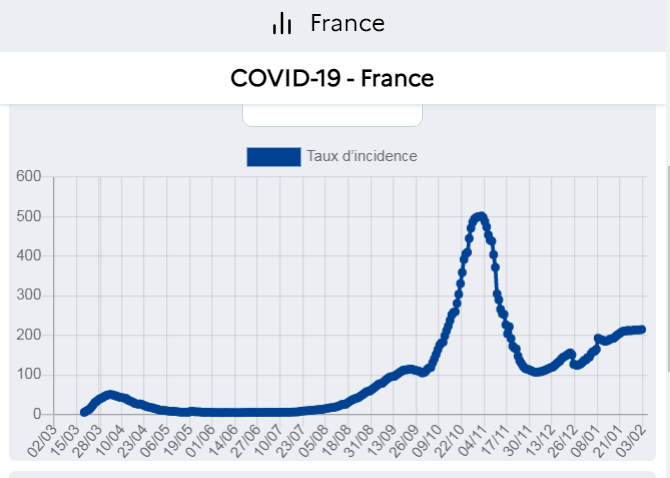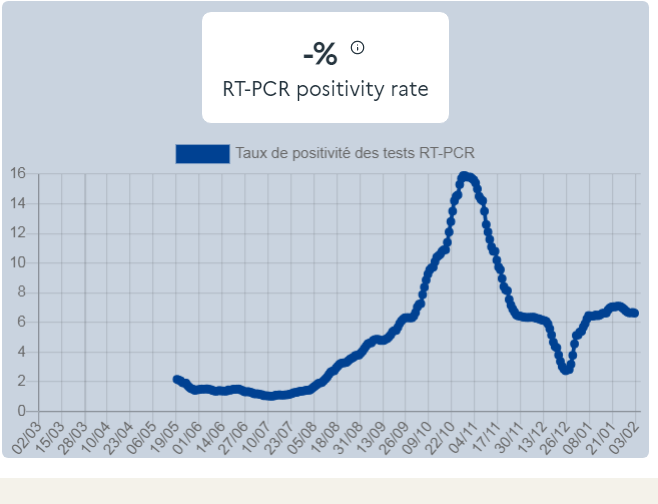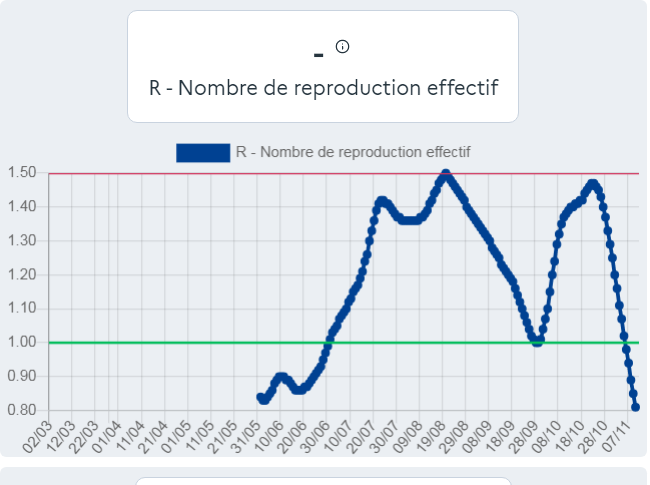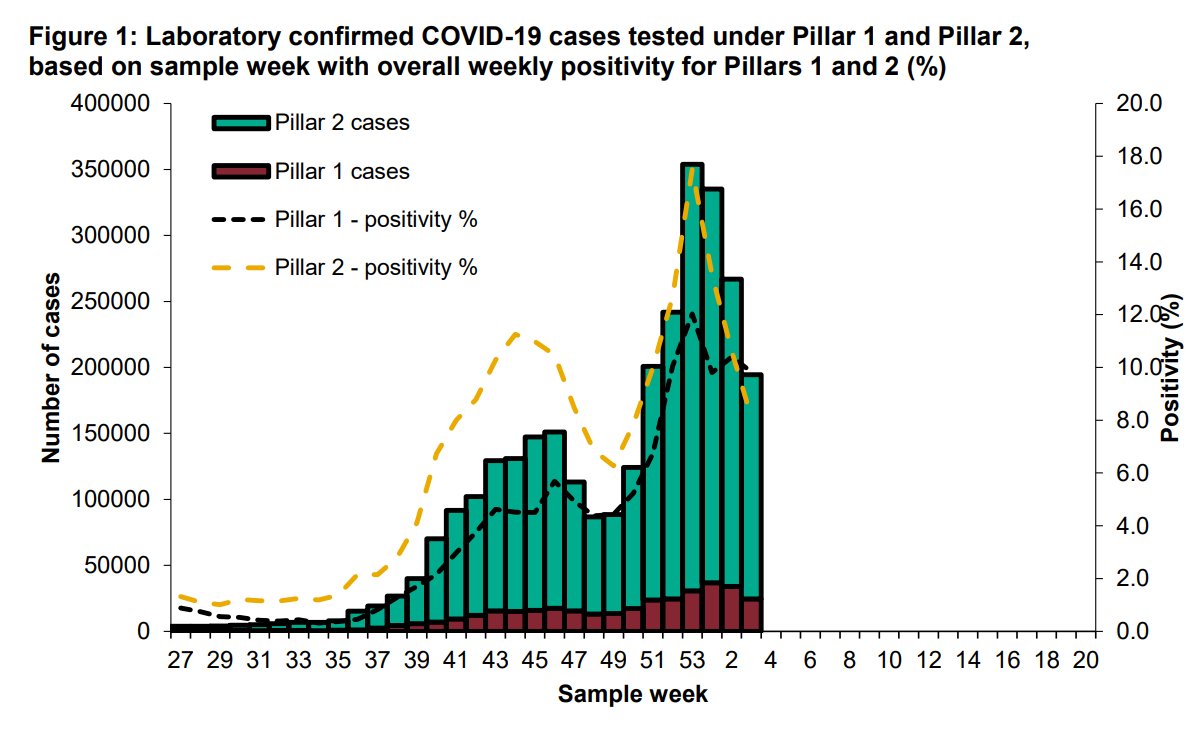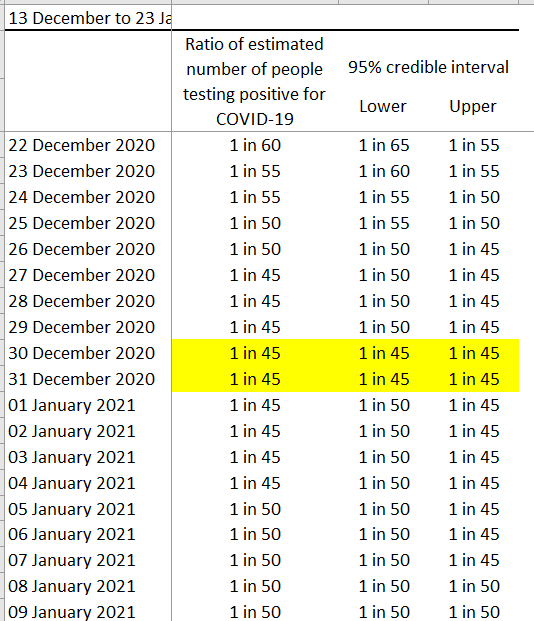
Although cases have plummeted worldwide since Christmas, most countries in Europe have started to see increases (small so far) in past couple of weeks.
This is true in places with few restrictions (Sweden/Finland) as well as those with strict lockdowns (Denmark/Belgium/Austria).
This is true in places with few restrictions (Sweden/Finland) as well as those with strict lockdowns (Denmark/Belgium/Austria).
Czechia is a good example: more or less in lockdown since mid-October though with quite a few specific tightening & relaxations at different times.
Restrictions ramped up even more on 30 Jan, yet cases are rising faster than in most countries. Here is the comparison with Sweden.
Restrictions ramped up even more on 30 Jan, yet cases are rising faster than in most countries. Here is the comparison with Sweden.

Not all countries have seen an increase, e.g.:
Portugal (lockdown) & Spain (no lockdown, varying regional restrictions): still seeing decreases.
Italy (restrictions but no lockdown & some recent relaxing) & France (significant restrictions, no lockdown): fairly stable for now.
Portugal (lockdown) & Spain (no lockdown, varying regional restrictions): still seeing decreases.
Italy (restrictions but no lockdown & some recent relaxing) & France (significant restrictions, no lockdown): fairly stable for now.
We know cases can decrease dramatically without lockdowns/significant restrictions (Sweden, Florida) & that re-opening does not have to lead to increases (e.g. California stay at home order lifted 24 Jan). But it's also clear lockdowns do not necessarily stop cases from going up.
The idea that governments can turn infections off and on like a tap by imposing or lifting restrictions is largely a fiction.
Some restrictions may have some impact, but the big picture is that cases tend to rise or fall irrespective of restrictions.
Some restrictions may have some impact, but the big picture is that cases tend to rise or fall irrespective of restrictions.
Who knows if we will also see an increase in the UK, but there are signs that our decrease has at least slowed down.
If our cases do start to increase, question is whether policymakers will ignore the evidence from the rest of Europe & use it as an excuse to delay re-opening.
If our cases do start to increase, question is whether policymakers will ignore the evidence from the rest of Europe & use it as an excuse to delay re-opening.
In fact, this is the only choice we face:
1. cases go up and down with society reopened (albeit with sensible precautions)
or
2. cases go up and down at (more or less) a similar rate but with continued forced closures and the huge economic & social costs they bring.
1. cases go up and down with society reopened (albeit with sensible precautions)
or
2. cases go up and down at (more or less) a similar rate but with continued forced closures and the huge economic & social costs they bring.
The other factor of course is vaccines. Assuming these are effective, even if cases go up quite significantly, with the vast majority of 70+ (the group where the majority of deaths occur) vaccinated, we should not see any huge impact on deaths.
Until recently, many people who (despite the data) really believed imposing & lifting restrictions has a big effect on cases, might have justifiably argued in favour of continued lockdowns. Now that is no longer a defensible position.
I can understand the Government being nervous about opening everything at once. But even if it happens in stages, the re-opening should start immediately and continue steadily irrespective of whether we see a significant rise in cases.
• • •
Missing some Tweet in this thread? You can try to
force a refresh


